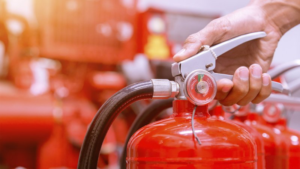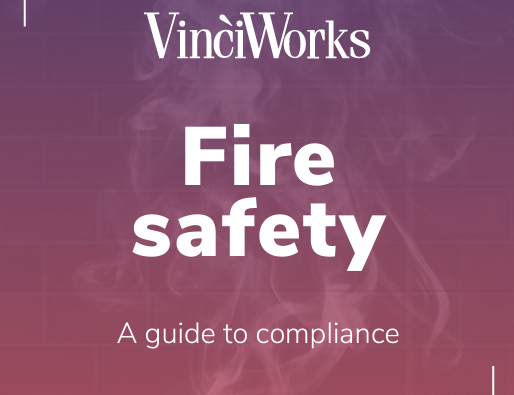Our related Courses
In June 2018, a fire broke out at the London-based food manufacturer UK Snacks Ltd. Most of their warehouse was destroyed. 120 firefighters and 20 engines responded to the blaze and took several hours to extinguish it. Unfortunately, with around 22,000 fires at non-residential properties breaking out annually, UK Snacks Ltd are not alone.
When fires break out in workplaces, the losses can be huge. Property damage is the most common consequence, leading to loss of earnings, stock and equipment. Once a building has fire damage, it can be a significant amount of time before it’s safe to work in it again. The worst cases can cause severe injuries and even deaths; in the 2013-2014 period, 17 fatalities were recorded as a result of fires that started in non-residential buildings.
Thankfully, there’s plenty that can be done to minimise the risk of a fire breaking out in your workplace.
Good Housekeeping
Where possible, clutter should be kept to a minimum. This is particularly true of materials that can become fuel for a fire such as paper, card or flammable substances. Where these need to be stored for an extended period of time, they need to be kept away from anything that could cause a spark and ignite them.
Kitchen areas require particular attention. Just as in the main working areas, kitchens need to be kept clean and clear from obstructions that might prevent workers leaving promptly in case of an emergency. Appliances such as microwaves should be cleaned regularly and kept to a good standard of maintenance, just as computer equipment and factory machinery should be.
Routes to fire exits should always be kept clear.
Knowing Fire Safety Rules
It’s every worker’s responsibility to do all they can to prevent fires. Good fire safety training helps you to identify fire risks and what to do if the worst case scenario happens and a fire breaks out.
Every employee should make sure they’re aware of their company’s plan for the evacuation of the premises in the event of a fire.

Electrical Safety
Most workplace fires are down to electrical faults or unsafe wiring. If you notice an electrical fault or wiring that appears to be damaged, it’s important to report it immediately so it can be repaired or replaced before it causes a problem. All electrical equipment needs to be inspected regularly to make sure it’s still safe and in good working order.
Employers should also ensure that their workers are fully trained to use all equipment they need to perform their jobs. Misuse of equipment – ranging from wrongly operating heavy machinery to overloading sockets – is the cause of many fires each year.
Create a Smokers’ Area
Smoking is a potentially dangerous hazard in the workplace. In 2013-2014, over a third of deaths in workplace fires were linked to smokers’ paraphernalia, including cigarettes that were not properly put out.
The risk can be reduced by the introduction of designated smokers’ areas. It’s important these are away from flammable materials and contain equipment for safely disposing of finished cigarettes.
Security
Unfortunately, it’s not only mistakes that businesses need to protect themselves from when it comes to fire safety. Arson is one of the most deadly fire threats facing businesses, causing up to 45% of fire deaths in workplaces. It is also one of the hardest to control, but there are steps employers can take to lessen the risk.
Employing security personnel or installing a CCTV system may be appropriate in some cases. Lighting and fencing are solutions that can help by securing the premises.
For employees, one of the most effective ways to protect against arson is by following your company’s security protocol. Be on the alert for anyone acting suspiciously around the building, always make sure you don’t accidentally allow an unfamiliar person access to your workplace and make sure everything is properly secure if you’re the last to leave at the end of the work day.
Fire safety doesn’t need to be complicated. Many of these suggestions are common sense, but it is easy to forget some of them when there are other priorities competing for your attention. However, by training appropriately and keeping fire safety in mind, the risk of your workplace becoming a fire statistic can be greatly reduced.


